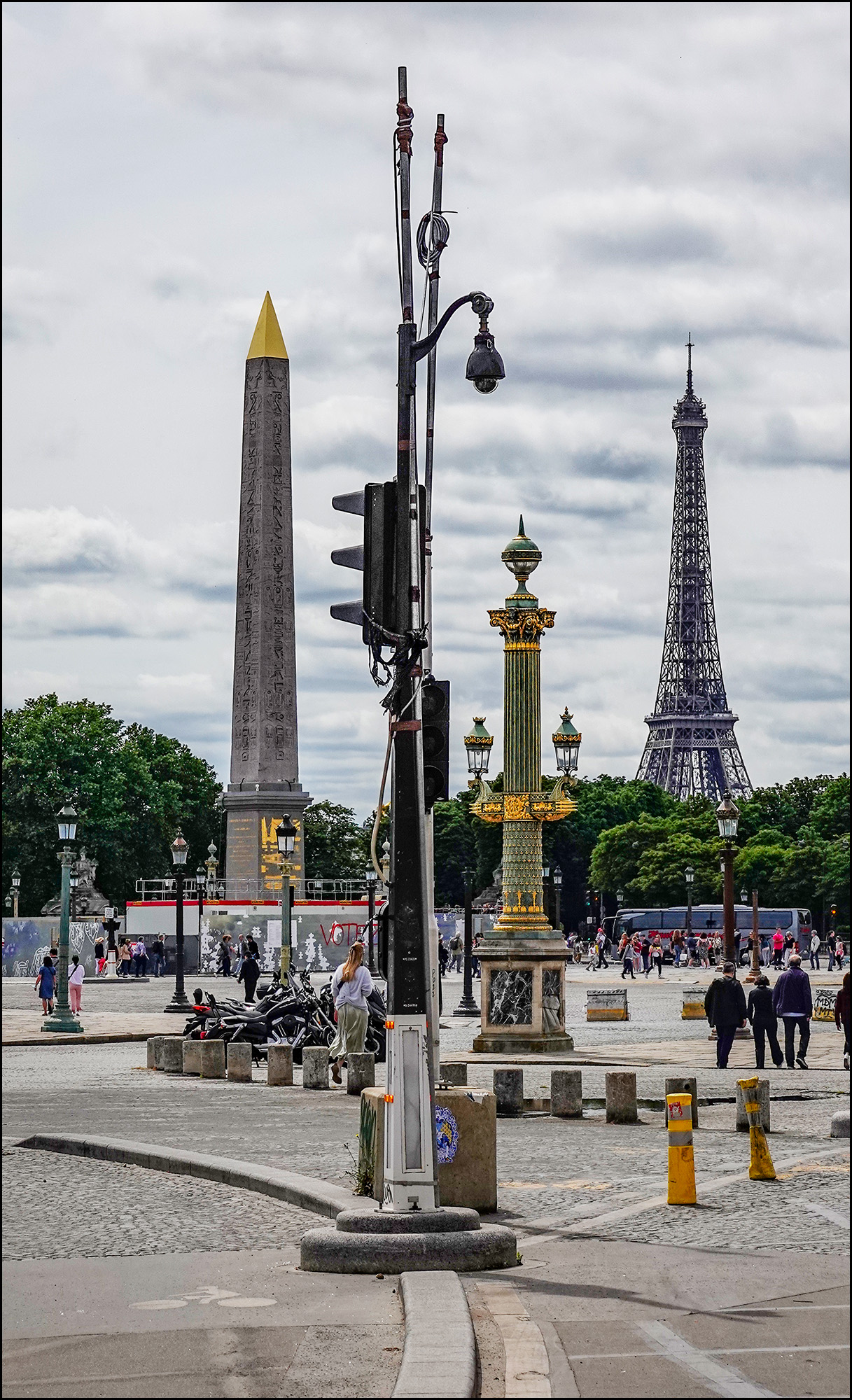The is the Place de la Phallus in Paris. It is more widely known as the Place de la Concorde, but I think this picture speaks for itself.
POSTSCRIPT: La Phallus? There's no use asking for logical explanations when it comes to the gender of words in languages that use gender. Phallus is a masculine noun in French. So is vagina. And penis is . . . well, you can probably guess.


If phallus is a masculine noun (as it is), then it's Place du Phallus, not Place de la Phallus.
Last time Marie Antoinette went there, she completely lost her head. (The Phallus wasn't there yet.)
In Ireland this summer we saw the Spire of Dublin on O'Connell Street, which has inspired a number of nicknames from the locals, inc. the Stiffy by the Liffey. My fave was the Rod of God.
https://en.wikipedia.org/wiki/Spire_of_Dublin
Eewww..
Napoleon and his discomforting compensation for perceived shortfalls against his fellow Frenchman.
My guess is something to do with Latin though that is fiendishly difficult to find out (at least, in the five minutes I spent on it). Penis comes from Latin for "tail." Phallus was borrowed from Greek by the Romans so it isn't particularly unusual that they would be differently gendered. Phallus ultimately comes from the Indo-European "bhel-" which means "to blow." Ah yes! We come full circle. A phallus is that which is blown so of course it is feminine.
!
I knew it!
There appears to be nothing I can say that doesn't sound nasty.
Kurtt Vonnegut once mocked Germans as a people who use the neuter gender for girls. Well, so do we Dutch. All diminutives are neuter, so the Germans equivalents for "lassie" are neuter just as "laddie" would. What I mean to say is that we who speak languages with genders, do not associate the gender of the noun with the gender of the designated object or person. They are often entirely different things. (In Dutch, by the way, the rules for feminine and masculine are the same, so if you asked me which of the two a table or a chair is in Dutch, I wouldn't know. But neuter is different, so in practice in Dutch you have two genders: sexed and neuter.)
In French, a man's beard is la barbe, feminine, a woman's breat is le sein, masculine, and don't get me started on genitals where I could give a long list. In general you can tell the gender from the last letters of the noun. Vagin, ending with "in", is masculine, phallus, "us", is masculine, barbe ending with an "e" is feminine, and so on. There are exceptions as in Spanish, in fact more of them, but it remains so that for most nouns there is no link between the gender of the word and that of what it designates. This only mystifies English speakers who for whom all nouns are preceded by the same word "the".
Try reading French pornography without running into some guy sticking la verge into some gal.